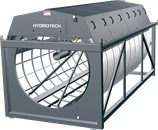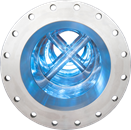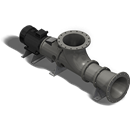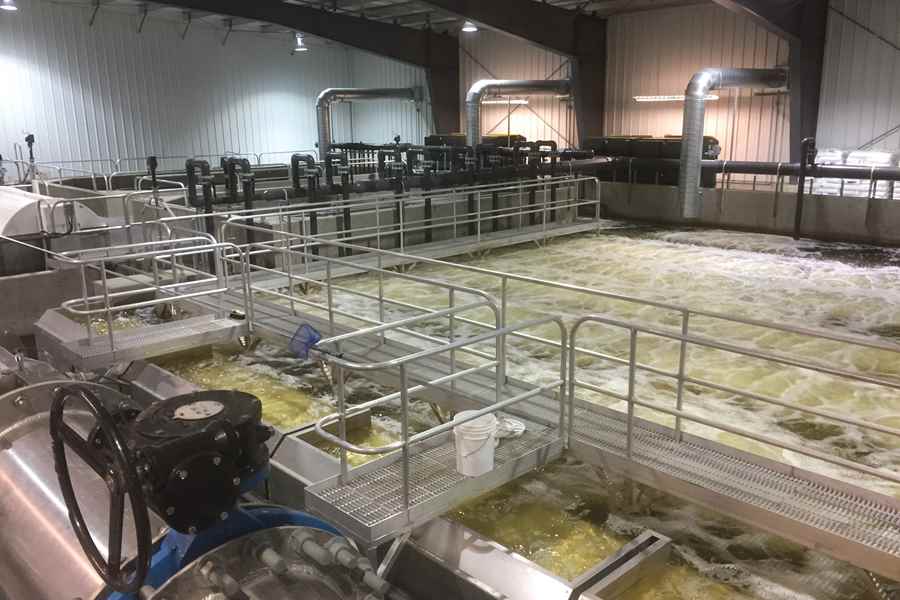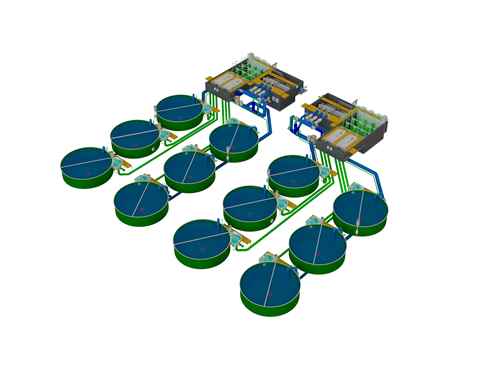RAS Systems
Recirculating Aquaculture Systems (RAS) have been at the heart of PR Aqua's operations since 1998, when we embarked on constructing our inaugural facility in Sechelt BC. This groundbreaking project aimed to cultivate Atlantic Salmon Smolts, setting a new standard for the aquaculture industry along Canada's Pacific coast.
Since those early days, our reputation as industry leaders has only solidified, with a multitude of successful RAS ventures completed across the globe. From North America to Europe, and beyond, our track record of success speaks volumes about our unparalleled expertise and commitment to excellence. The vast majority of these projects remain operational today, serving as a testament to our enduring legacy of innovation and unwavering dedication to advancing the aquaculture industry.
What is RAS Aquaculture?
A Recirculating Aquaculture System, or RAS, is a cutting-edge approach to cultivating aquatic species within a controlled, indoor environment. This innovative technology operates on a closed-loop system, minimizing water usage while offering unparalleled environmental control. By confining operations indoors, RAS systems significantly mitigate the risks associated with parasites, diseases, and predators, ensuring optimal conditions for the thriving growth of aquatic species.
How Does a Recirculating Aquaculture System work?
In a Recirculating Aquaculture System, water undergoes a series of meticulous treatments and processes. Through advanced filtration, disinfection, re-oxygenation, and conditioning technologies, the water is carefully purified to ensure it meets the highest safety standards for aquatic inhabitants. This water is continuously recirculated within the system, resulting in minimal need for fresh water; often less than 1% of the total volume. Additionally, any waste generated is efficiently recovered for either proper disposal or repurposing as valuable fertilizers, ensuring a sustainable and eco-friendly operation.
The Superior Benefits of RAS Aquaculture
- Water savings: RAS achieves remarkable water savings, with 95% to 99% of the water within the system being efficiently recirculated, significantly reducing the overall water consumption required for fish production.
- Mortality reduction: The closed-loop design of RAS ensures superior biosecurity, minimizing or even eliminating exposure to pathogens. This drastically reduces the incidence of health issues such as sea lice infestations, commonly encountered in open net pen systems.
- Faster throughput: With optimized water conditions and nutrition, RAS facilitates accelerated fish growth rates, resulting in quicker throughput and enhanced production efficiency.
- Higher quality fish: By mitigating stress factors through controlled environments, RAS yields healthier, higher-quality fish with superior taste and texture.
- Natural Products: RAS operations prioritize sustainability and animal welfare, often employing minimal to zero hormones and antibiotics in the production of fish, ensuring the delivery of natural and responsibly sourced seafood.
- Environmentally Friendly: Through efficient water management practices, RAS significantly reduces its environmental footprint, making it a sustainable and eco-friendly choice for aquatic cultivation.
- Process Automation: RAS systems are equipped with advanced monitoring and control technologies, allowing for 24-hour oversight of crucial parameters such as feed delivery and water quality, ensuring optimal conditions for fish health and growth.
- Location: By situating fish production facilities closer to consumer markets, RAS minimizes transportation costs and delivers the freshest possible seafood to consumers, enhancing both economic and gastronomic value.
RAS Systems Are More Important Than Ever
According to a United Nations estimate, by 2030, well over half of fish for human consumption will come from the aquaculture industry. Aquaculture is a growing but still underutilized means of protein production and will be a primary source of future seafood supply. Land based aquaculture (RAS) will be the primary means of future growth.
Discuss Your Project
No matter how big or how small, or how far along your plans are, we can help. PR Aqua’s technical knowledge and client commitment are second to none. Let’s get started!
